
This was a rolling impressions article originally posted on my blog in 2012. It has been reposted here since I still feel many aspects of it ring true.
Since getting my Panasonic GF1 I’ve been convinced that mirrorless cameras are the future for most photography. Advantages such as smaller size, better focus accuracy and compatibility with almost any lens spell big trouble for traditional camera form factors such as the SLR or rangefinder.

The mirrorless systems have matured quickly. Initial problems such as slow auto focus speed and wonky handling were mostly corrected already by the second generation. But still, some problems remained.
Ruining one of the main advantages is the lack of usable manual focus aids in most mirrorless cameras. The procedure of zooming in to focus manually, loosing sense of the overall composition is the norm rather than the exception. This pretty much destroys any fun in using lenses from other systems.
Most mirrorless cameras also lack viewfinders, a huge disadvantage in very bright or poor light. The cameras that do have integrated finders inexplicably place them in a space inefficient prism hump, a completely unnecessary hold over required by the SLR construction, having no relevance at all in a mirrorless camera. Not only does it compromise usability due to the smallness of the cameras, but it also just doesn’t make sense.
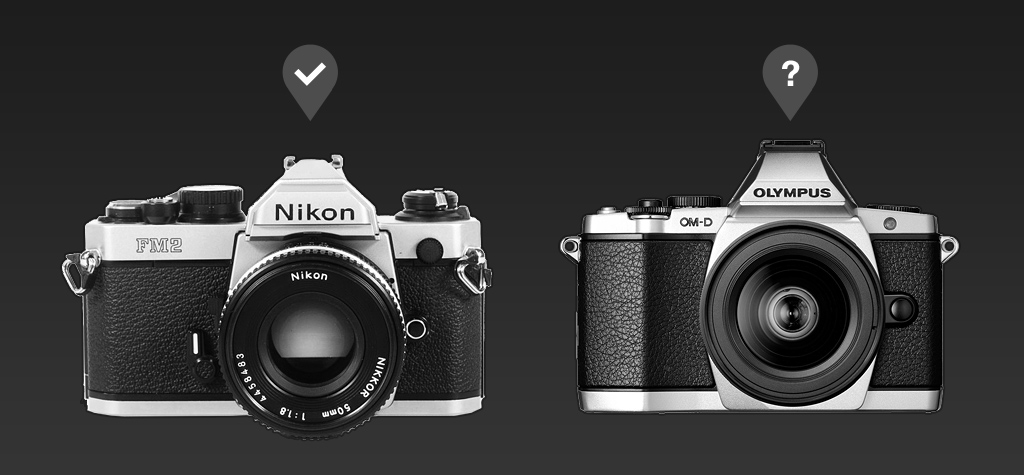
In the NEX-7 Sony might have solved both these problems.
The NEX-series debuted in mid 2010 and is very interesting since it’s very much a natively digital system. From the start there have been very few aspects of camera design that have gone unchallenged by the team at Sony. The first cameras in the series – NEX-3 & NEX-5 redefined how a camera could and should look without the analog heritage. Not much more than a large sensor and a display the tiny cameras were impressive feats of engineering.
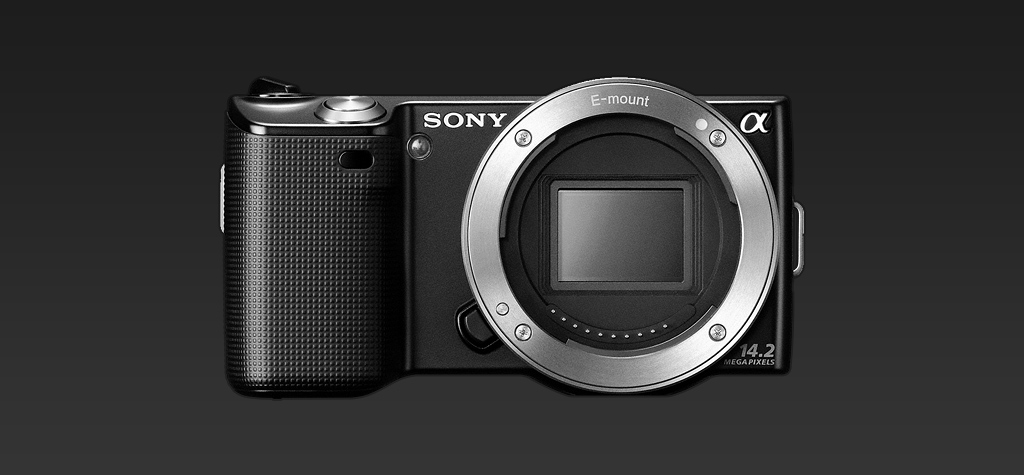
The original NEX-5
Due to the highly reduced set of physical controls and overly complex software there were some handling issues, but the cameras did demonstrate that Sony wasn’t messing around. That they were dedicated and not afraid to innovate to get ahead.
While neither camera had a viewfinder, they did gain a solution to the problem of manual focus. Inherited from video camera software, focus peaking made it’s way to the NEX-series in a software update a few months after the cameras were released and seemingly everyone with a collection of legacy lenses was suddenly paying attention to what Sony was doing.
Focus peaking analyzes data from the image processor before sending it to the viewfinder/LCD, looking for high contrast. When it finds the areas with the highest contrast, it marks it with color. The highest contrast usually means that’s were the lens is focused – thus the user can focus without zooming in.
Just over a year after the NEX-3/5, Sony presented their next breakthrough in camera design. This time they were the ones who were paying attention. They had obviously been listening to what serious users of the NEX-3/5 was wishing for, considered what was worth implementing and how it should work in a digital context.
When they presented the NEX-7 it looked almost too good to be true. A tiny camera with three external dials, enabling control of all three shooing parameters (shutter speed, aperture and ISO) simultaneously for the first time in digital photography. The large, high resolution sensor was of course passed on, in upgraded form, from the 3/5.
Perhaps most exceptional was that they had fitted a larger and higher resolution viewfinder than any other on the market in the camera without resorting to the SLR prism hump design. A true, born and bred, digital camera design without compromised usability.
Then the tragic monsoon floods hit Thailand – knocking out the entire NEX production line, of course infinitely insignificant compared to the loss of life and sufferings of the effected population.
Today, seven months after the announcement, the camera is still in extremely short supply. Rarely available in stock anywhere. Happily I have finally received the camera I ordered late last year – after becoming convinced it could live up to it’s promise of excellent handling by trying one for just a few minutes at a Sony store. This entry will serve as a rolling article of my experience with the camera.
Usually unpacking a camera is not a very memorable experience. Oversized, plain, cardboard boxes. Haphazardly organized equipment and accessories. Already when unboxing the NEX-7, it’s clear that it’s different.
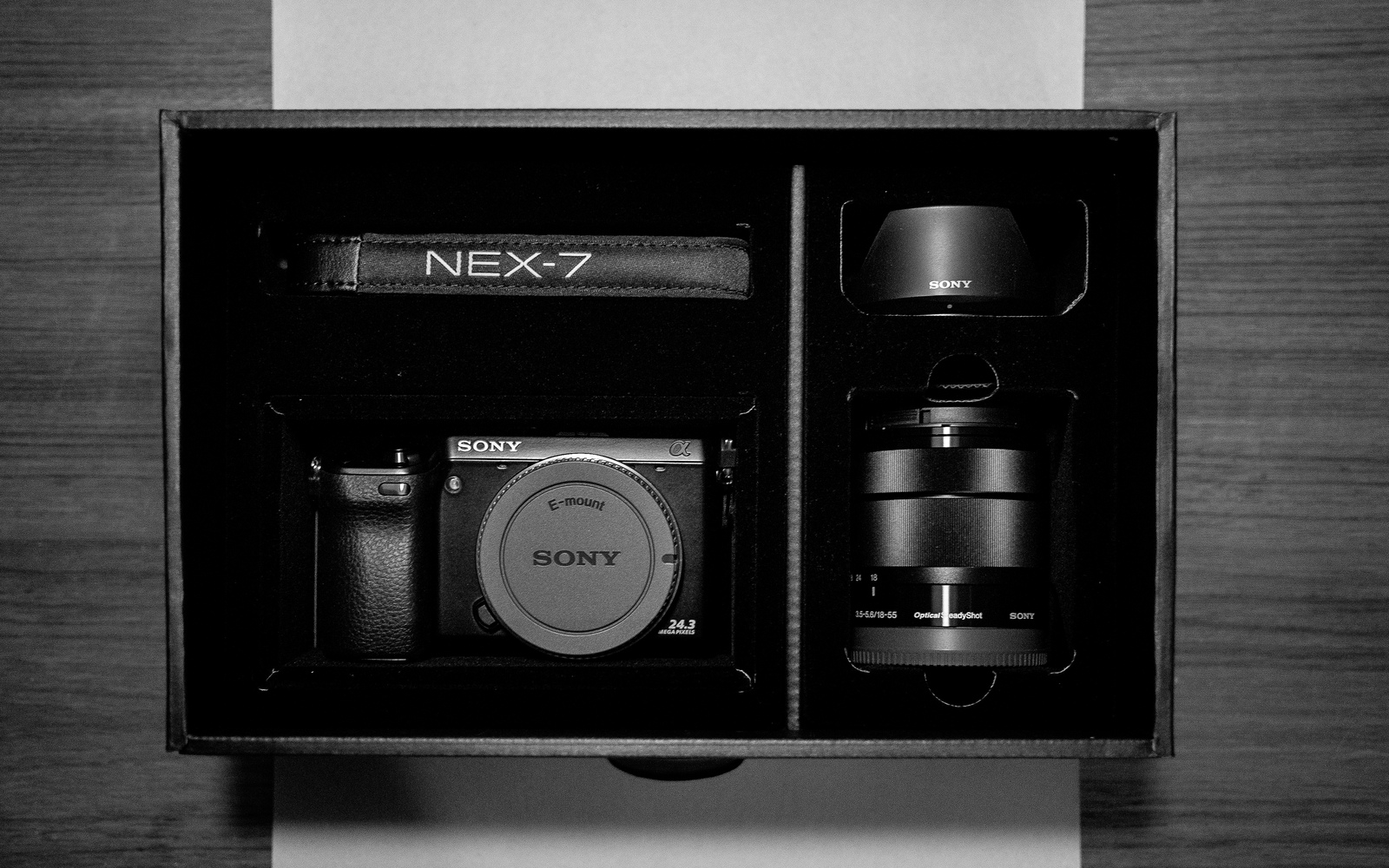
The packaging is more akin to something you’d see from Apple – sophisticated, considered. Removing the outmost layer reveals a sleek black box labeled NEX-7. Lifting the box, containing manuals and other paper work, reveals the main act – the camera and lens placed in felt lined cardboard. The whole thing looking close to a presentation case. Nice touch.
The battery is delivered uncharged. Odd considering that most other companies deliver stuff with batteries charged nowadays. There’s probably a reason for this, but waiting for four hours before using the camera felt a bit annoying.
I opted to go for the kit with the 18-55mm, since the price difference between that and going body only was minimal. I much prefer primes to zooms, but as far as kit zooms go, this one seems fairly nice. The range is decent and it is stabilized which should come in handy since it’s fairly slow. It’s smaller than expected, almost the same size as the EF 50mm 1.4.
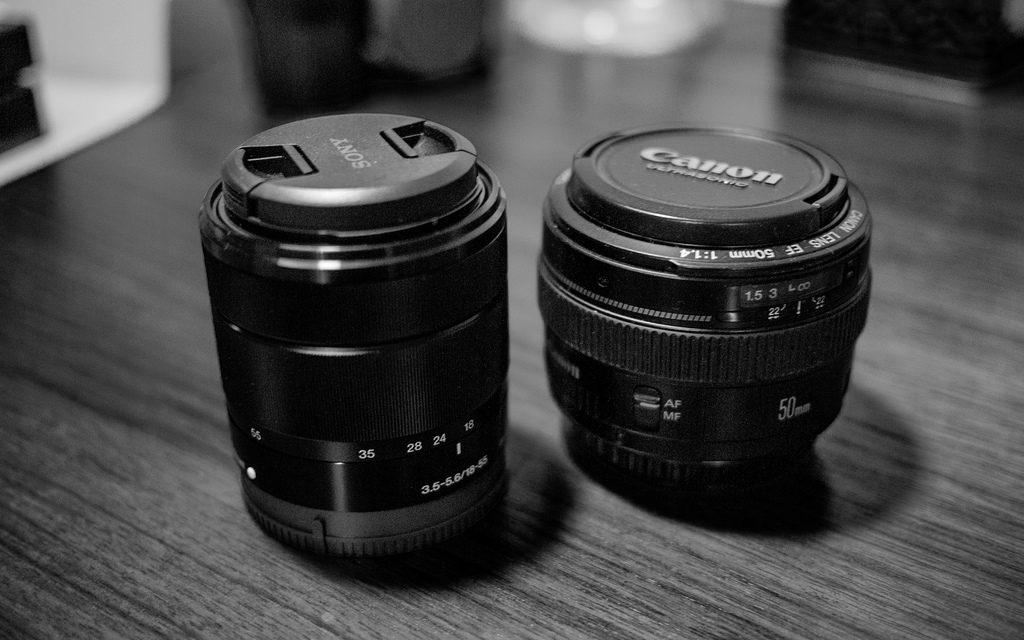
The camera strap also seems fairly nice with some leather lining. The included power cable for the charger is shorter than usual, which is great since longer cables are an annoyance whenever traveling.
The camera itself looks great and feels very solid. It actually feels better put together than almost every camera I’ve used. Despite the small size of the camera it feels great in the hand, most controls within easy reach. The buttons feel distinct and all the dials feel great with clear clicks. The dials seem slightly on the smooth side for me to count on them staying in place though.
The NEX-7 is almost exactly the same size and weight as the GF1. Amazing considering the larger sensor and the bunch of other extra stuff it offers.
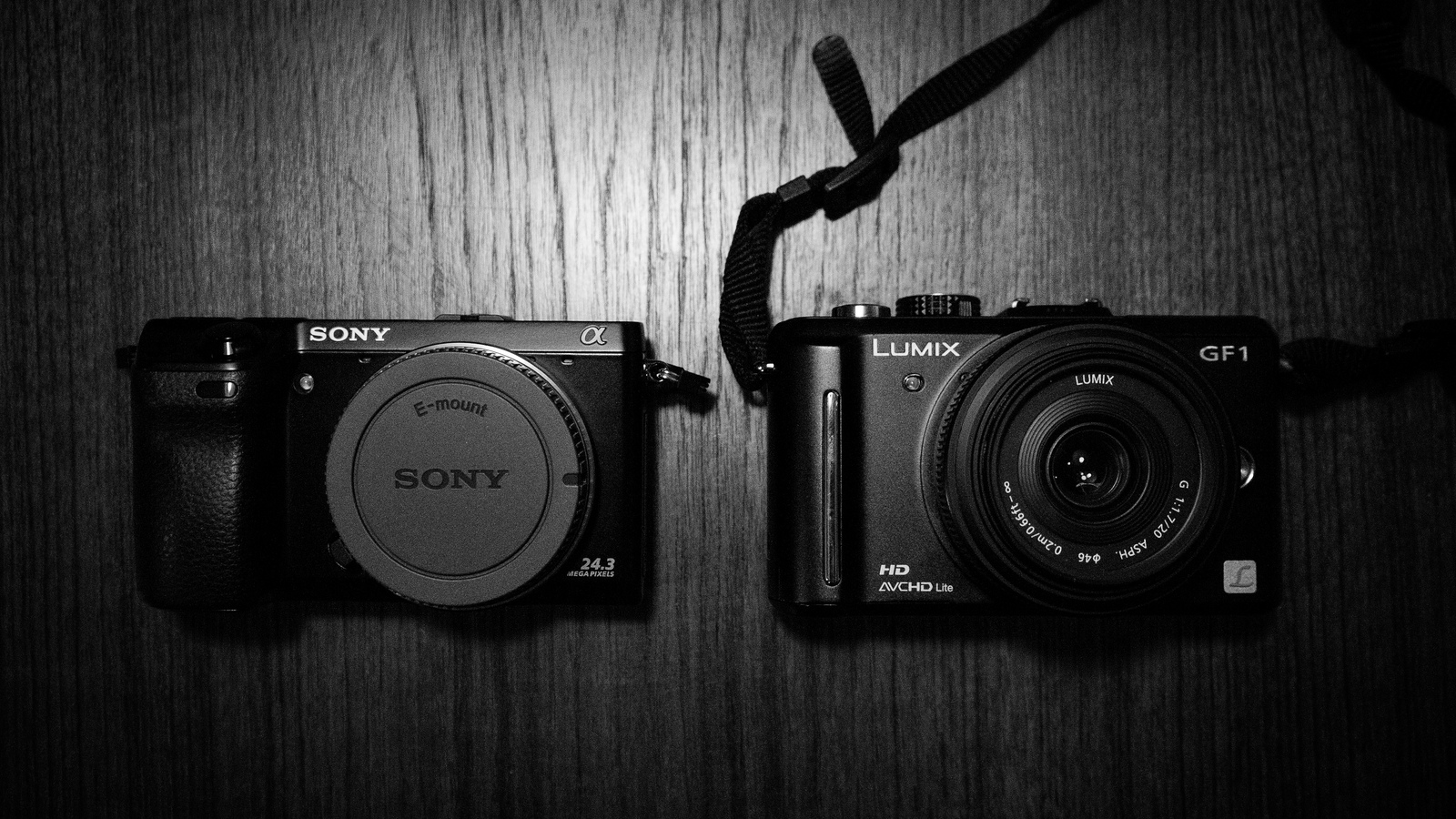

Turning the camera on you are reminded that Sony is a hardware company above anything else. The software is obviously the weakest point of the NEX-7. After setting up date and time you are greeted with a view that makes you feel like you’re sitting in the cockpit of the Batmobile without even having a drivers license. Icons, numbers, text and flashing stuff all over the screen.
The menus are equally confusing. Some settings inexplicably unavailable, until you change some other, seemingly unrelated, setting – which unlocks the first setting. The set up options are overwhelming. So many places to change so many things. This is probably a good thing in the long run, since you’ll be able to get it to work just like you want to. But the first impression is one of confusion. I’ve never felt the need to read a camera manual (except once, when learning how to load my Hasselblad 500), but with the NEX-7 I might have to.
I have yet to shoot anything proper with the camera but feel very excited to, despite the confusing software. The next installment will happen as soon as I’ve done some shooting and gotten a feel for working with the camera.
There are times when creating that everything just fades away. It’s just you and what you are working on. The tools disappear, only the flow of doing remains.
I often get there when designing, sometimes when writing and sometimes when photographing. A great tool, that you’re familiar with, takes you to that place quicker and doesn’t yank you back by getting in your way.
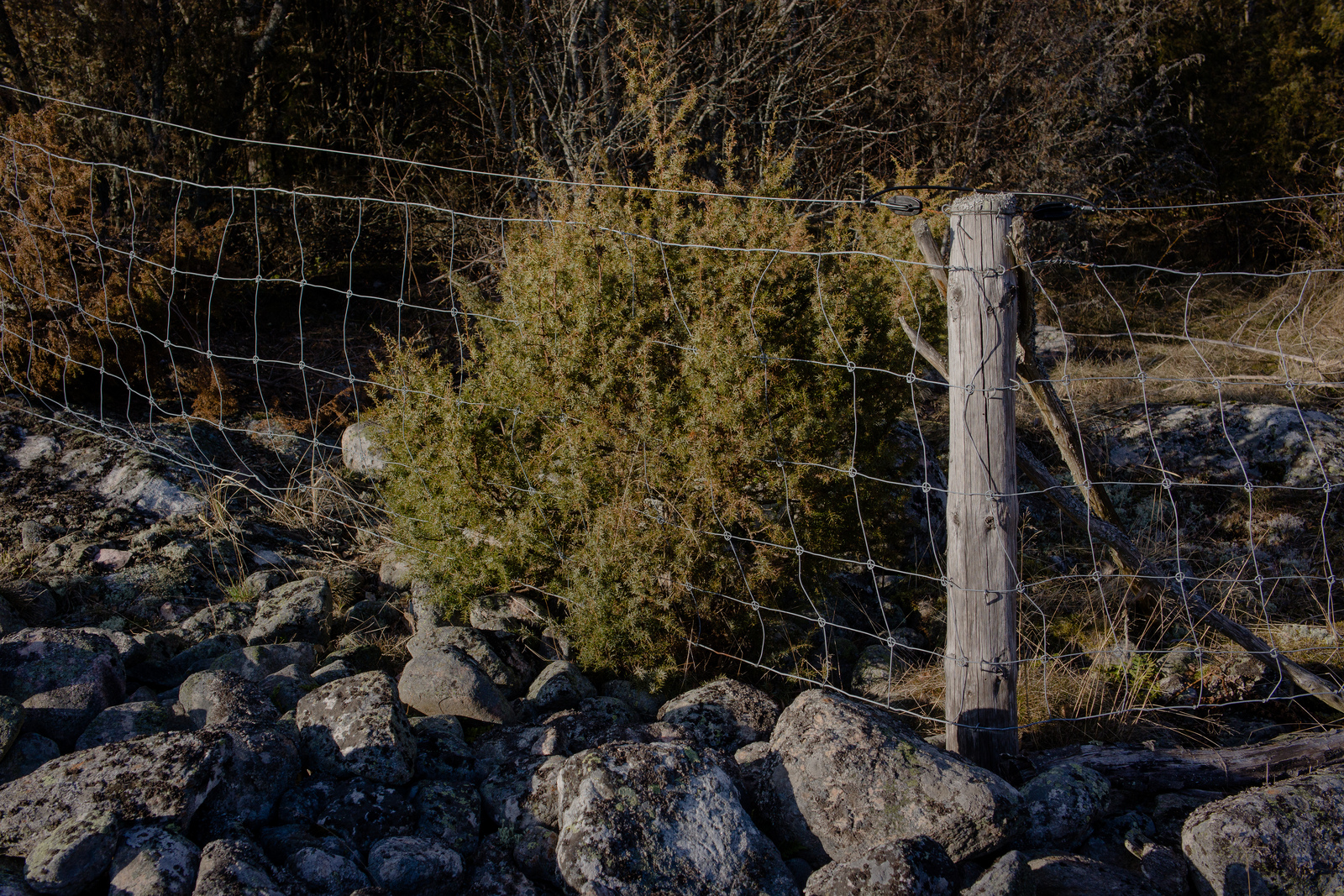
Many cameras get in your way far more than they should – by being slow, having the wrong controls, being clumsy or just poorly designed. The NEX-7 however, is one of the best cameras I’ve used in the way it simply accommodates what you want to do. Set exposure using the rear screen, compose using the viewfinder, toggle manual focus with the press of a button, stop down the lens with a dial, adjust ISO to get the shutter speed up, angle the screen to get a better angle. All the controls and features are within easy reach – every major setting can be changed holding the camera in one hand.
The size is great. Just like the GF1 it’s big enough to get a good hold (even slightly better due to the deeper grip) and to fit all the needed controls, but small enough to almost disappear when not being actively used.

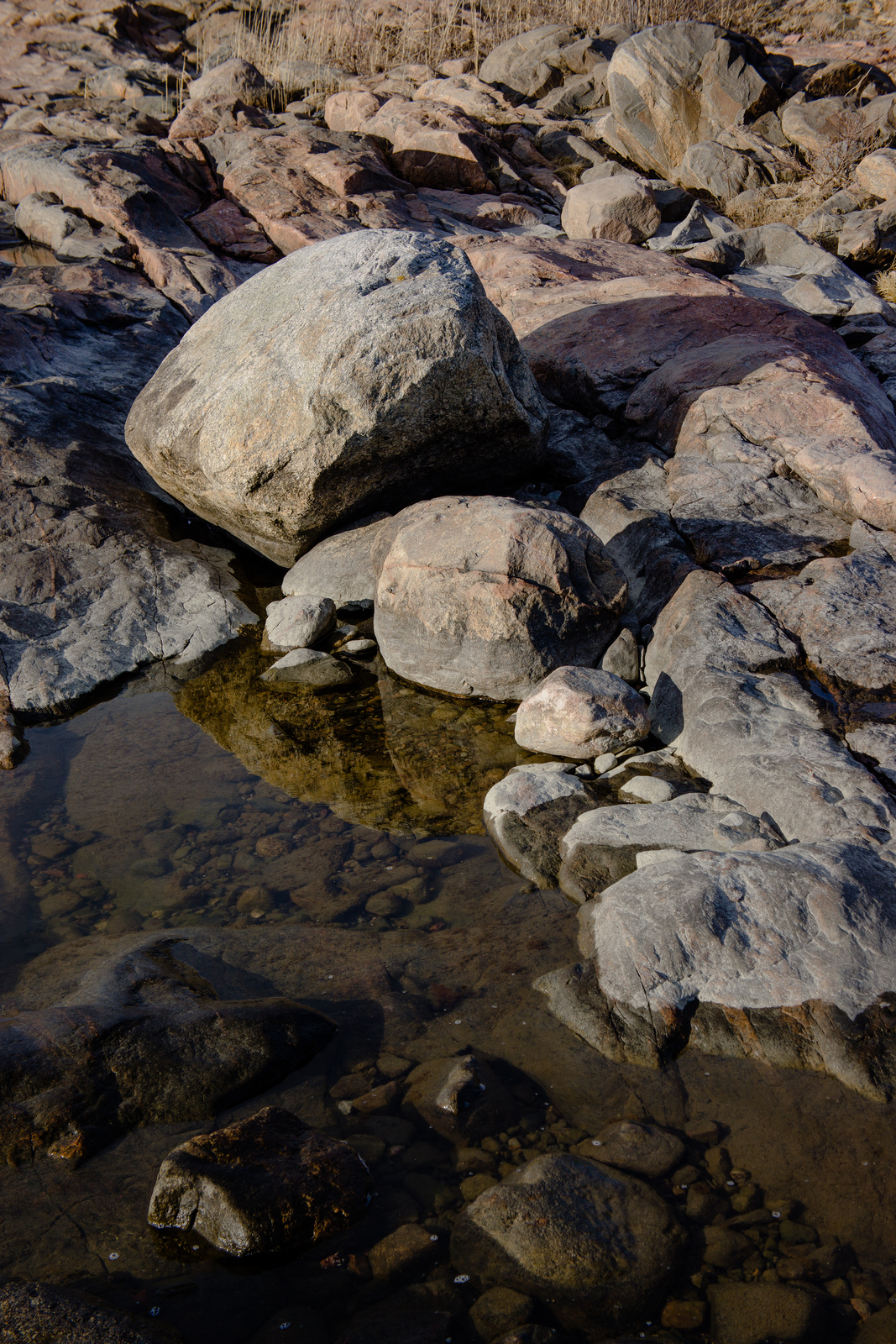
Just as suspected the software is much better when configured to taste. There are still some incredibly stupid oversights though. My main irritation being that MF zoom assist cannot be toggled or decoupled from the focus ring when using native E-mount lenses. I.e when you turn the focus ring in manual focus mode, the viewfinder is automatically zoomed in. This makes the great focus peaking functionality close to redundant. Mind boggling.
While I actually enjoyed using the kit lens more than I thought, zooms mess with my head. My sense of composition gets knocked out of calibration by all the focal lengths available, resulting in more wishy-washy photos than usual. At least the range is good and since the lens is light it doesn’t get in the way.
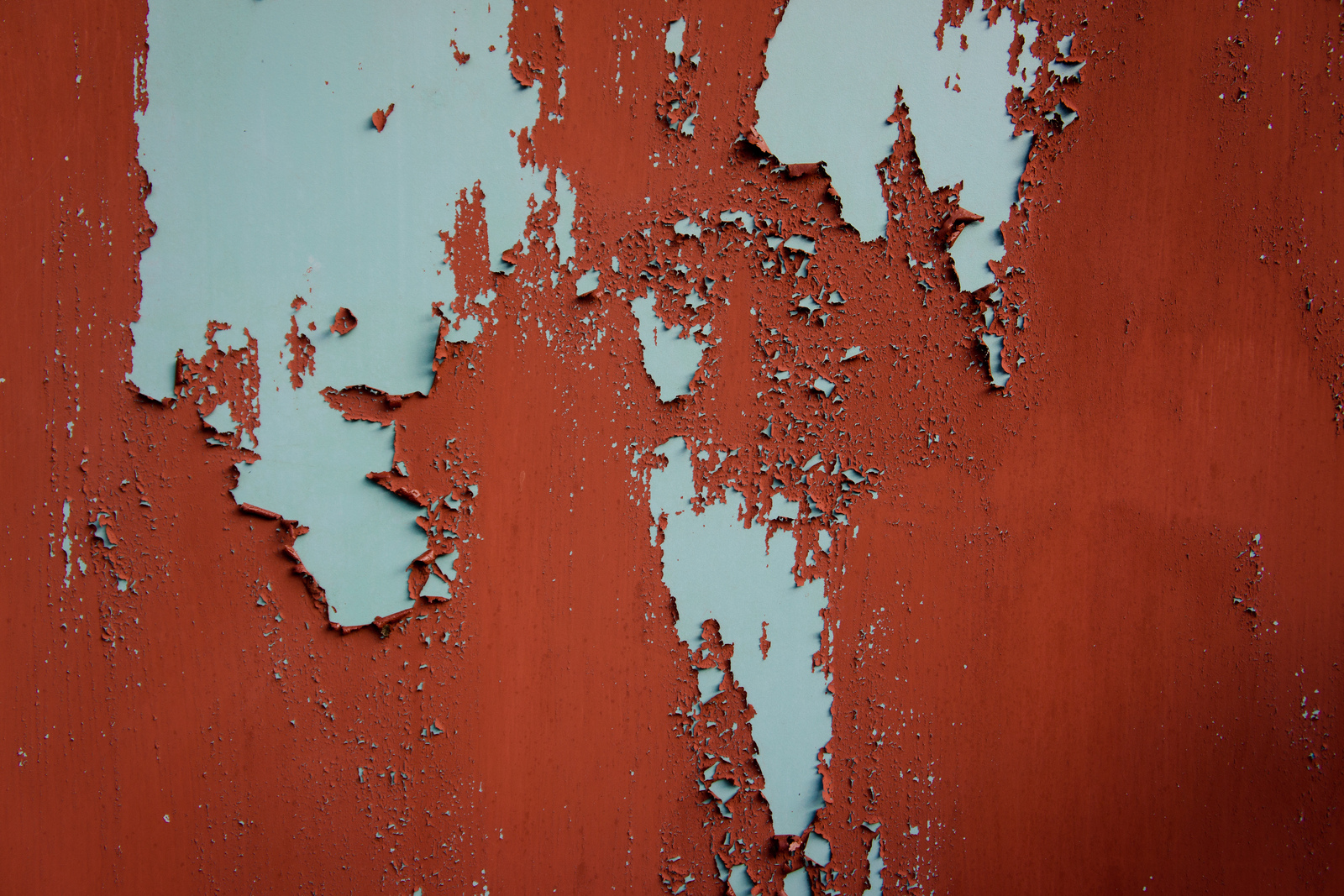
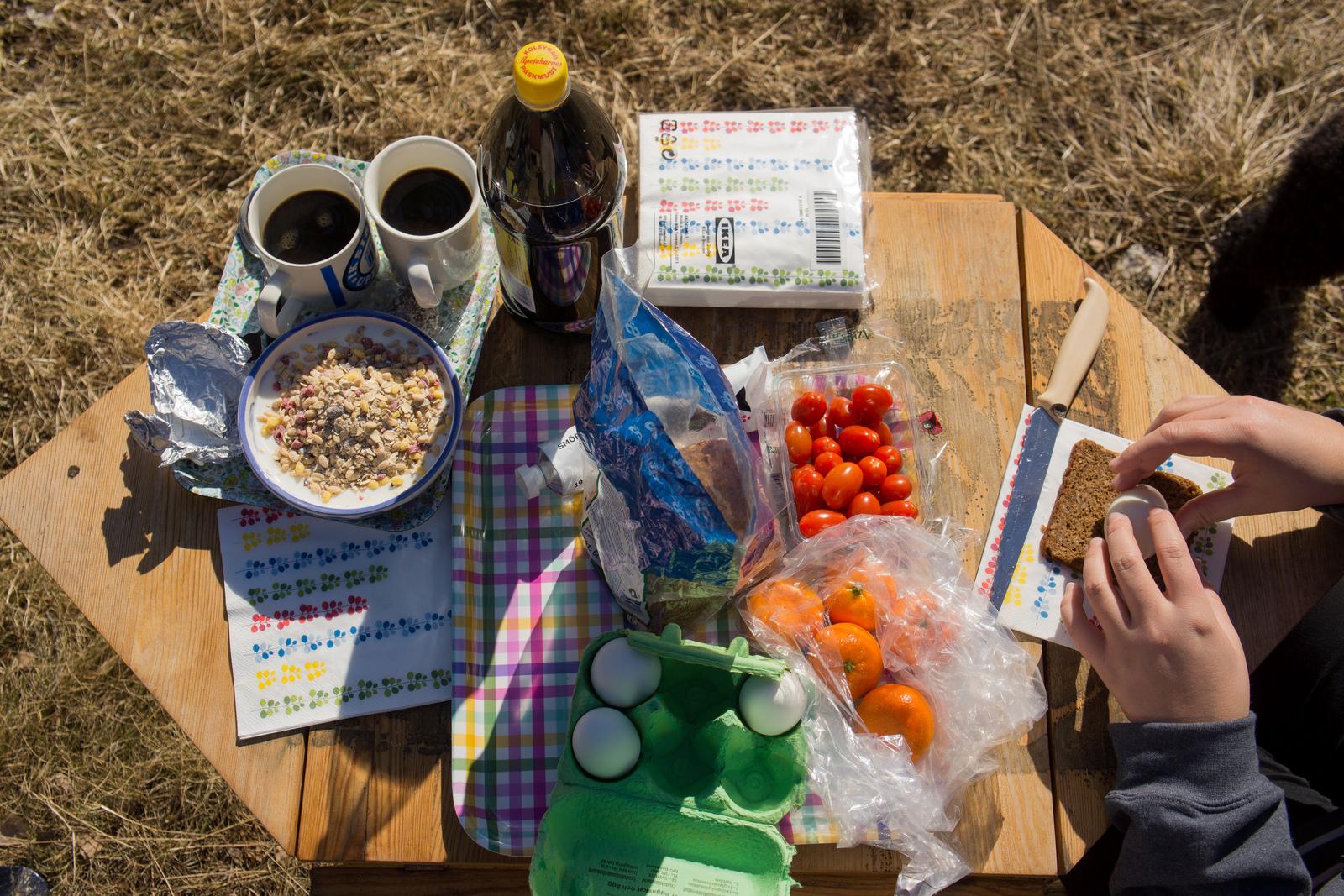
The conditions for shooting were ideal – bright with the sun slowly setting, warming up the light, but slight overcast, softening the shadows. I was still worried. Would the image quality live up to my high expectations.
Importing the photos into my newly installed Lightroom 4 I was prepared for disappointment. Was the kit lens even close to good enough for the sensor? Was the auto focus accurate enough? Had I used too big aperture? Too small? Too long shutter speeds?
My worries turned out to be completely unfounded. Instead my jaw dropped. The resolution was amazing. The colors bloody great. The kit lens was indeed good enough.
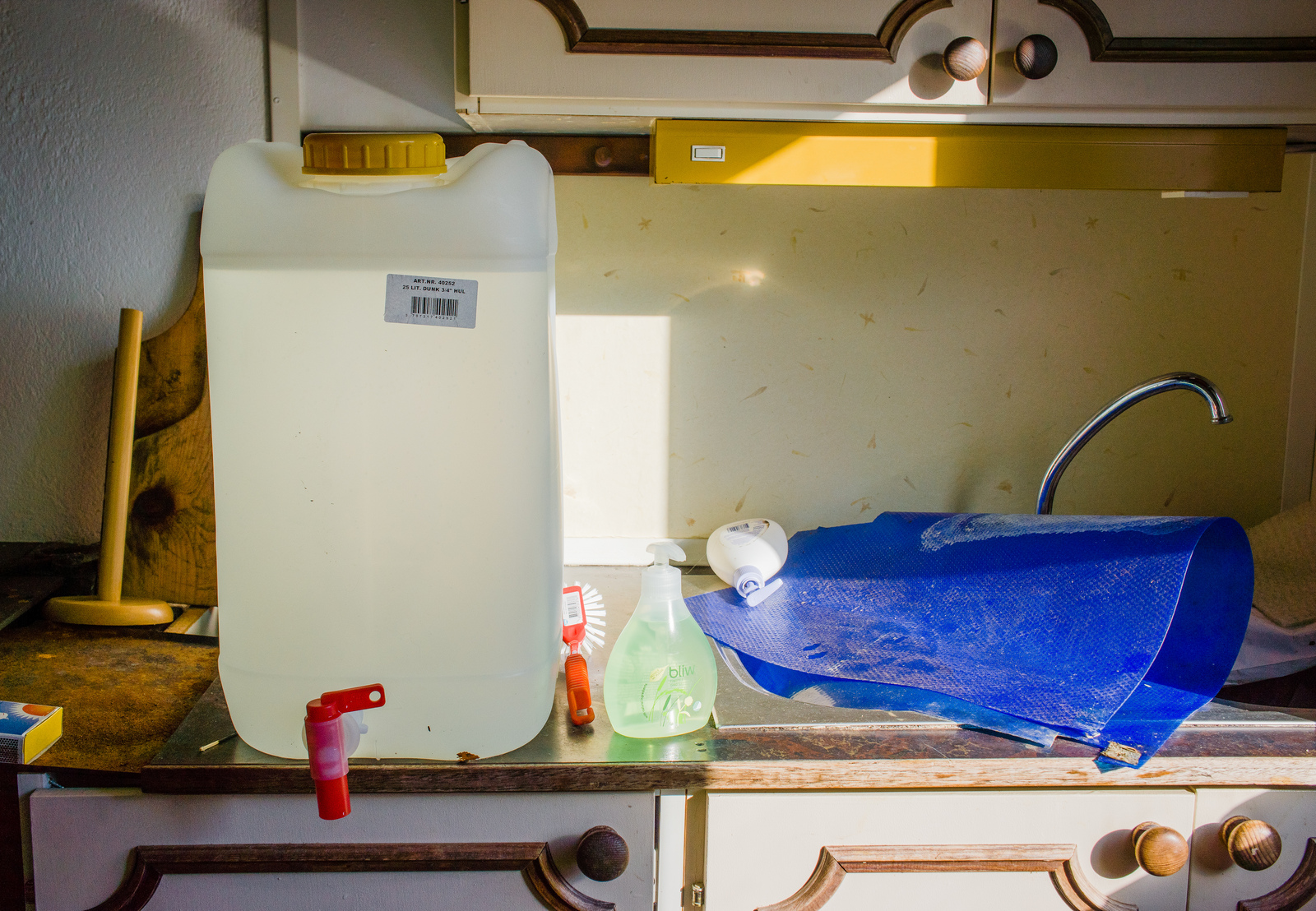
After selecting some of the photos I liked and starting to push and pull them, my entire upper torso exploded. The dynamic range was far, far beyond what I’ve come to expect from even my 5D Mk II. The robustness of the files equally impressing – I could push the files several steps further than those from the 5D Mk II without any signs of breaking apart. Combined with the new processing engine of Lightroom 4 I was able to get much longer tonal transitions resulting in more pleasing looking images.
Usability is a go. Good light image quality is a go. Until next time I hope to try some low light shooting. I’m guessing it will be a challenge with the slow kit lens, but hopefully the stabilization will compensate partially.
Good light is easy. Even a cellphone camera can do well enough in good light. Low light, not so much. Most smaller cameras start vomiting noise all over the photos as soon as the sun sets. But in the words of Billy Ocean – When the going gets tough, the tough get going.
Keen to find out just how tough the NEX-7 was, I decided to take it for a walk in the deepening night.
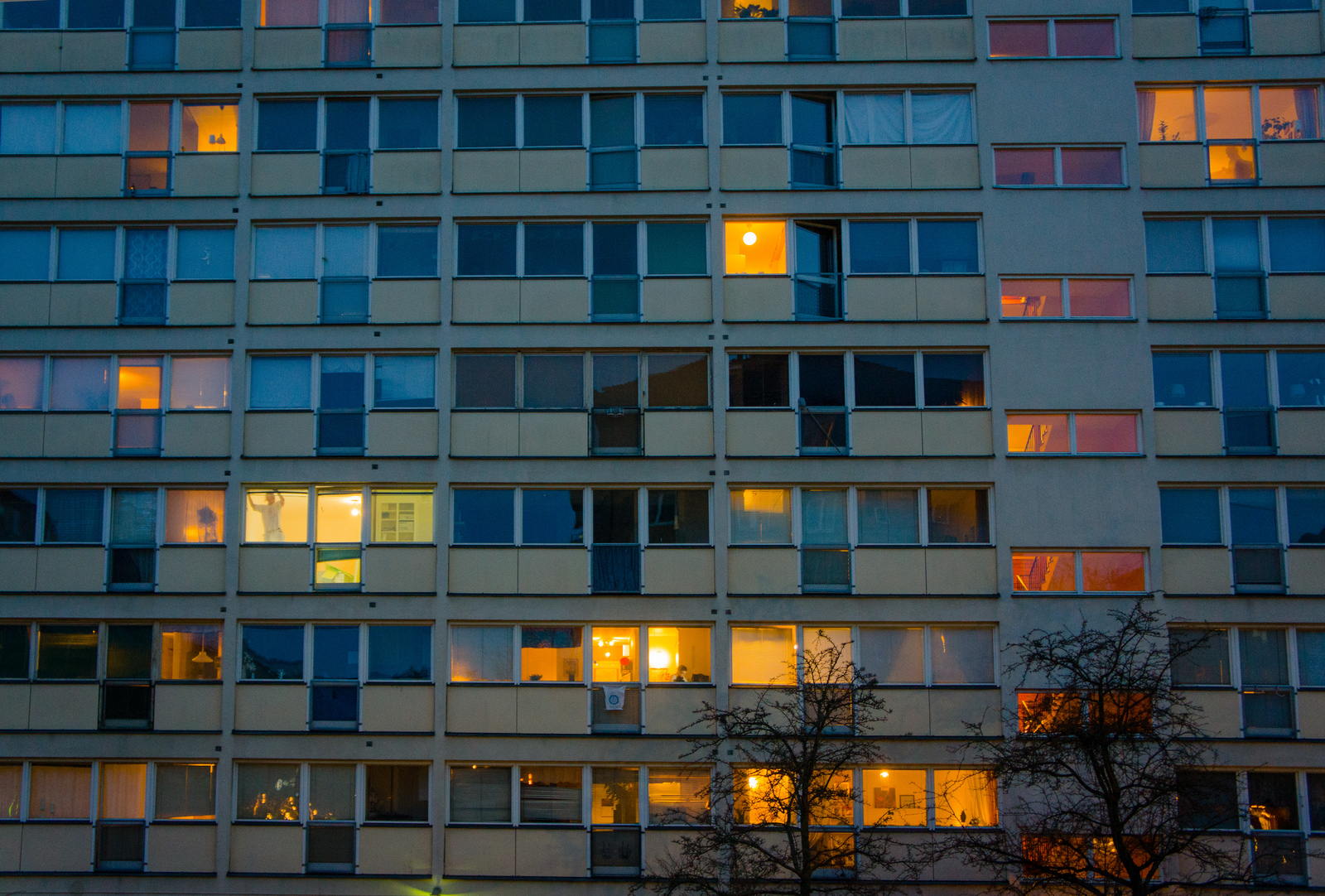
I like shooting in low light, but I prefer not being tethered to a tripod or required to use flash. Hence low light performance is important to me.
Wandering the neighborhoods of northwestern Södermalm, I found lots of nice looking stuff too shoot. But with the slow kit lens, I was getting horrible times, even when going to 1600 or even 3200 ISO – 1/10th of a second at 40mm equivalent is well outside what I’m used to be able to handhold.
Checking the playback on the rear screen I was surprised not to find the expected motion blur.
Image stabilization has been around for quite a while. But since it’s been available almost exclusively in big and expensive zooms, something I have zero interest in, my experience with it has been very limited. Because of this, the Optical Steady Shot marking on the kit lens meant little to me.
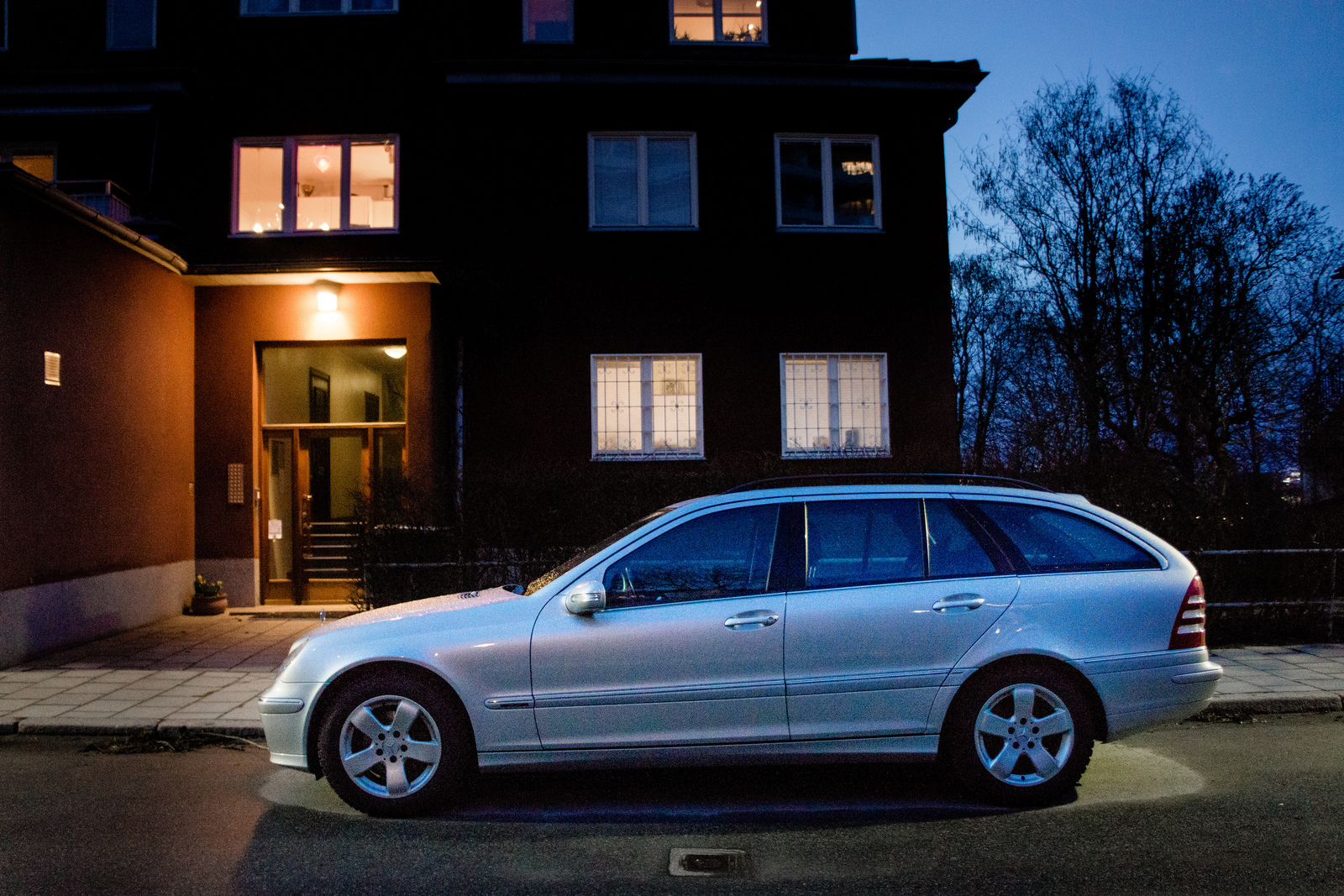


But wow, was I pleasantly surprised. I found that with the combination of the electronic first shutter and the OSS system in the kit lens, I got sharp results down to even 1/4th of a second.
The noise characteristics are also better than expected – I was getting acceptable results even at ISO 3200 or, if stretching it, ISO 6400. I’d peg it at about two stops better than the GF1, my favorite camera except for the low light performance. The 5D Mk II is about half a stop better still, but considering the size difference that’s something I’m willing to live with.
I’m continually amazed at how well the NEX-7 can keep up with whatever I throw at it. It indeed gets going when the going gets tough.
You know what – all this minutiae doesn’t really matter. I had been writing an update on shooting with rangefinder lenses on the NEX-7. But it just felt so utterly boring. Boring because it just doesn’t matter.
What matters are the broad strokes.
I fell in love with digital photography a decade ago. It made me see the world around me with new eyes. The seeing was the fun part, the resulting JPEG-files – just icing on the cake. With time I became more conscious of the results.
I began using bigger cameras to get nicer looking images. But I slowly began feeling encumbered by the D-SLR form factor. Lugging clumsy cameras around felt like a chore. Holding that big black lump up to my eye to shoot felt awkward. The JPEG-files were now the fun.
Mirrorless cameras has brought the fun back into shooting for me, without taking away from the fun in nice looking results. Shooting the NEX-7 with rangefinder lenses is so close to perfect for what I like about photography that I can’t really be bothered by tiny stuff.
I’m becoming increasingly disinterested in the tools, there are many good enough. More interested in the seeing. I’m back where I started.
I’d rather just go and look around. Maybe shoot what I see.
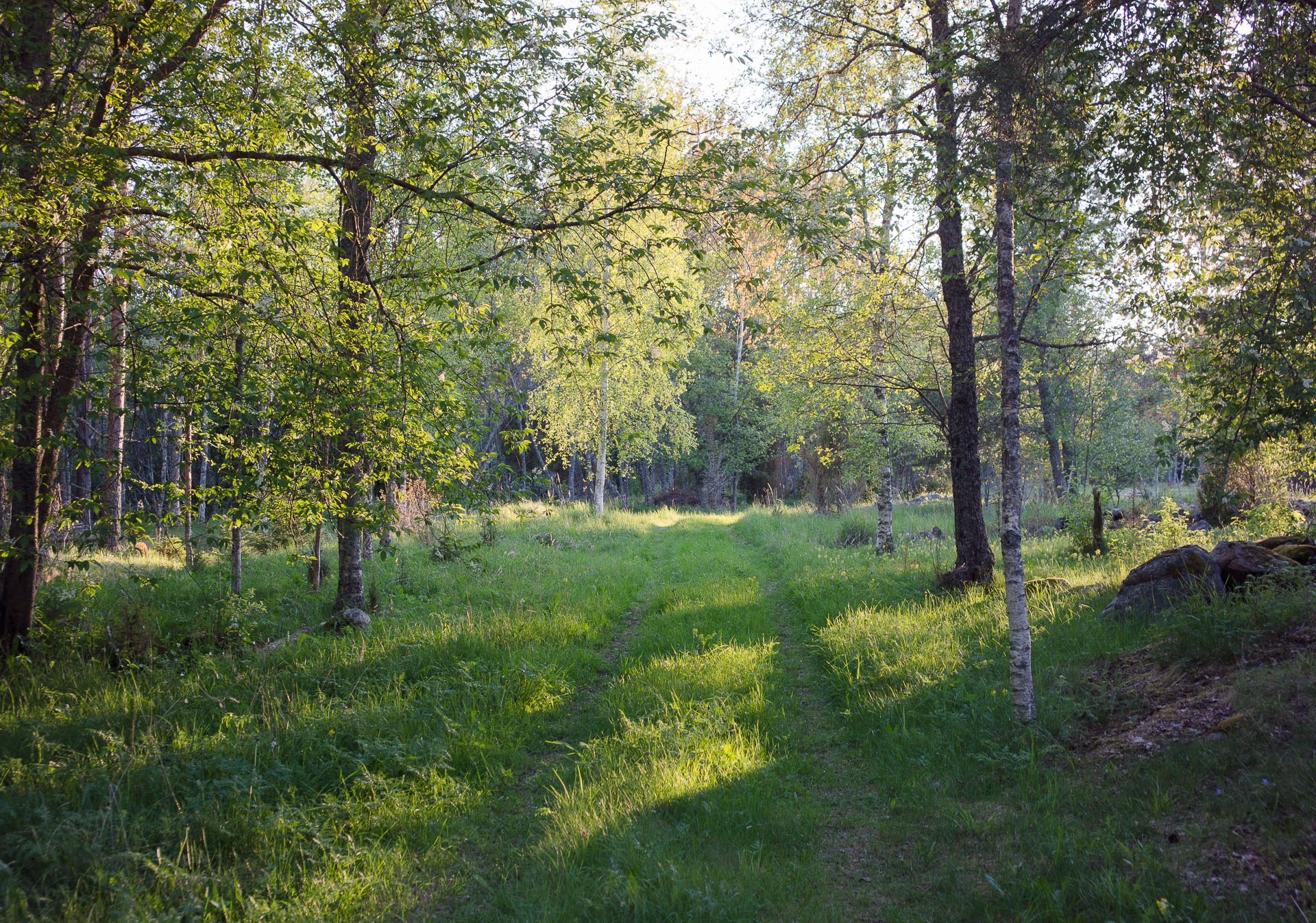
Exif-data is intact of the photos. Open any image in a new window for a closer look.